Over the past 6 years, recommender systems have undergone a remarkable transformation, driven by advancements in machine learning, increased data availability, and expanding applications. As a data scientist with extensive experience in this field, I’ve observed firsthand how these systems have evolved to become more sophisticated, accurate, and impactful. Let’s delve into the technical details of this evolution.
Expanding Data Sources
The diversity and richness of data sources powering recommender systems have grown significantly:
Social Media Data
Social networks provide a wealth of information about user preferences and behaviors:
- Graph-based features: Analyzing social connections using techniques like node2vec or GraphSAGE to capture latent user representations.
- Content engagement: Leveraging likes, shares, and comments to understand user interests.
- Text analysis: Applying natural language processing to user-generated content for sentiment analysis and topic modeling.
IoT and Sensor Data
The proliferation of connected devices has opened up new data streams:
- Location data: Using GPS coordinates to provide context-aware recommendations.
- Activity tracking: Incorporating data from wearables to understand user habits and preferences.
- Smart home data: Leveraging information from connected home devices to infer user routines and needs.
Unstructured Data
Advancements in deep learning have enabled the incorporation of complex, unstructured data:
- Image processing: Using convolutional neural networks (CNNs) to extract features from product images or user-generated photos.
- Natural language processing: Applying transformer models like BERT or GPT to analyze text descriptions, reviews, and queries.
- Audio analysis: Employing techniques like mel-spectrograms and recurrent neural networks (RNNs) to process audio data for music or podcast recommendations.
Advances in Modeling Techniques
The core algorithms powering recommender systems have evolved significantly:
Deep Learning Architectures
Neural network models have revolutionized recommendation systems:
- Autoencoders: Using models like Variational Autoencoders (VAEs) for collaborative filtering, learning latent representations of users and items.
- Neural Collaborative Filtering (NCF): Combining matrix factorization with multi-layer perceptrons to model complex user-item interactions.
- Wide & Deep Learning: Integrating memorization of sparse features with generalization of dense features for improved recommendations.
Hybrid Approaches
Combining multiple techniques has become increasingly common:
- Content-Collaborative Hybrid: Integrating content-based features with collaborative filtering, often using techniques like factorization machines.
- Context-Aware Models: Incorporating contextual information using approaches like tensor factorization or contextual bandits.
- Multi-Modal Fusion: Combining different data types (e.g., text, images, and user behavior) using techniques like attention mechanisms or gated networks.
Reinforcement Learning
Framing recommendation as a sequential decision-making process:
- Deep Q-Networks (DQN): Modeling the recommendation process as a Markov Decision Process to optimize long-term user engagement.
- Policy Gradient Methods: Using algorithms like REINFORCE to directly optimize recommendation policies.
- Actor-Critic Models: Combining value estimation and policy optimization for more stable learning in recommendation environments.
Session-Based Recommendations
Capturing short-term user preferences in real-time:
- Recurrent Neural Networks (RNNs): Using models like GRU4Rec to model sequential user behavior.
- Self-Attention Mechanisms: Applying transformer-based models like SASRec to capture complex dependencies in user sessions.
- Graph Neural Networks (GNNs): Leveraging session graphs to model item-to-item transitions and user preferences.
Evolving Applications
Recommender systems have expanded beyond e-commerce into diverse domains:
Media and Entertainment
Streaming platforms leverage advanced recommendation techniques:
- Netflix: Using ensemble methods combining various algorithms, including personalized video rankers and contextual bandits.
- Spotify: Employing a combination of collaborative filtering, natural language processing of song lyrics, and audio feature analysis.
Social Media
Personalized content discovery drives engagement on social platforms:
- Facebook: Utilizing deep learning models like DeepText for content understanding and personalized ranking.
- TikTok: Employing multi-modal recommendation systems that analyze video content, user interactions, and creator information.
Healthcare
Recommender systems are making inroads in personalized medicine:
- Treatment Recommendations: Using collaborative filtering and content-based approaches to suggest appropriate treatments based on patient characteristics and historical outcomes.
- Clinical Trial Matching: Employing hybrid models that combine structured patient data with unstructured medical records to recommend suitable clinical trials.
Education
Adaptive learning platforms personalize educational experiences:
- Knewton: Using probabilistic graphical models to create knowledge graphs and personalize learning paths.
- Duolingo: Employing spaced repetition algorithms and adaptive difficulty adjustment based on user performance.
Challenges and Future Directions
As recommender systems become more powerful, new challenges and research directions emerge:
Algorithmic Bias
Addressing fairness and bias in recommendations:
- Fairness-Aware Recommendation: Developing algorithms that balance accuracy with fairness metrics, such as equal opportunity or demographic parity.
- Debiasing Techniques: Applying methods like adversarial debiasing or regularization approaches to mitigate biases in training data.
Explainability and Transparency
Making recommendation systems more interpretable:
- Local Interpretable Model-Agnostic Explanations (LIME): Providing instance-level explanations for complex black-box models.
- Attention Visualization: Leveraging attention mechanisms in neural networks to highlight important features influencing recommendations.
Privacy and Data Governance
Balancing personalization with user privacy:
- Federated Learning: Training models on decentralized data without sharing raw user information.
- Differential Privacy: Adding controlled noise to protect individual user data while maintaining overall model utility.
Emerging Research Directions
Exciting areas for future development include:
- Causal Inference: Applying techniques like instrumental variables or propensity score matching to understand the true impact of recommendations.
- Multi-Task Learning: Developing models that can simultaneously optimize for multiple objectives (e.g., engagement, diversity, and revenue).
- Cross-Domain Recommendations: Leveraging transfer learning techniques to improve recommendations in domains with limited data.
- Quantum Computing: Exploring quantum algorithms for matrix factorization and similarity computations in large-scale recommender systems.
Hybrid recommender systems have gained significant traction in various industries due to their ability to combine multiple recommendation techniques, resulting in more accurate and diverse suggestions. Here are some real-world applications of hybrid recommender systems:
E-commerce
Amazon is a prime example of a hybrid recommender system in action:
- Amazon uses a combination of collaborative filtering, content-based filtering, and other techniques to provide personalized product recommendations
- Their system analyzes user purchase history, browsing behavior, and product attributes to suggest items that customers are likely to be interested in
- The famous “Customers Who Bought This Item Also Bought” feature is a result of their hybrid approach, combining collaborative and content-based filtering
Streaming Services
Netflix employs a sophisticated hybrid recommendation system:
- Netflix’s algorithm combines collaborative filtering, content-based filtering, and other techniques to suggest movies and TV shows
- It analyzes viewing patterns across its user base while also considering the metadata of shows and movies
- This hybrid approach helps Netflix maintain viewer engagement by offering relevant content and addressing the limitations of individual recommendation methods
Music Streaming
Spotify utilizes a hybrid system for music recommendations:
- Spotify’s Discover Weekly playlist is a prime example of hybrid recommendations in action
- The system combines collaborative filtering (based on user listening habits) with content-based analysis of song attributes
- This approach allows Spotify to introduce users to new music that aligns with their tastes while also considering the acoustic properties of songs.
News and Media
News websites and media platforms often use hybrid systems:
- These platforms analyze user reading habits and preferences (collaborative filtering) while also considering article content and topics (content-based filtering)
- This hybrid approach helps deliver personalized news feeds that are both relevant to individual interests and diverse in content.
E-learning Platforms
Online learning platforms benefit from hybrid recommender systems:
- These systems can combine user behavior analysis (e.g., courses completed, time spent on topics) with course content analysis to suggest relevant learning materials
- This approach helps personalize the learning experience while also introducing users to new, potentially interesting topics.
Travel and Hospitality
Travel booking platforms often use hybrid recommender systems:
- These systems can combine user preferences and booking history with destination attributes and current travel trends to suggest personalized travel options
- This hybrid approach helps users discover new destinations while also considering their past travel preferences.
Social Media
Social networking platforms leverage hybrid systems for various recommendations:
- Platforms like Facebook use hybrid approaches to suggest friends, groups, and content
- These systems analyze user connections and interactions (collaborative filtering) while also considering profile information and content attributes (content-based filtering).
Hybrid recommender systems offer several advantages in these real-world applications:
- Improved accuracy: By combining multiple techniques, hybrid systems can provide more accurate recommendations
- Diverse suggestions: These systems can recommend items that users may not have explicitly shown interest in, broadening their exposure to new content
- Adaptability: Hybrid systems can adjust to changes in user behavior over time, ensuring that recommendations remain relevant
- Mitigation of individual method limitations: By combining approaches, hybrid systems can address issues like cold starts and data sparsity that often affect single-method recommenders
As technology continues to evolve, we can expect to see even more sophisticated hybrid recommender systems emerging across various industries, further enhancing personalization and user experience.
In conclusion, the field of recommender systems has seen remarkable progress over the past 6 years, driven by advancements in machine learning, data availability, and diverse applications. As we look to the future, the continued evolution of these systems promises to deliver even more personalized, efficient, and impactful recommendations across a wide range of domains. The challenges of bias, explainability, and privacy present exciting opportunities for research and innovation, ensuring that the field of recommender systems remains dynamic and crucial in the years to come.

